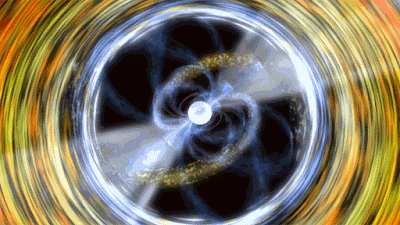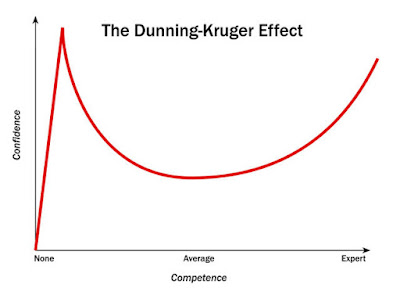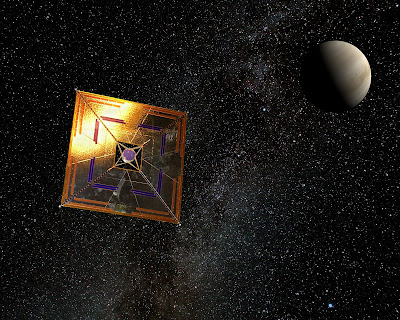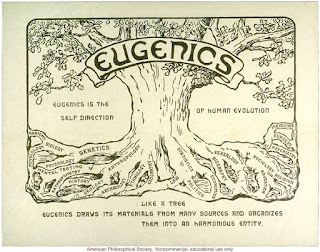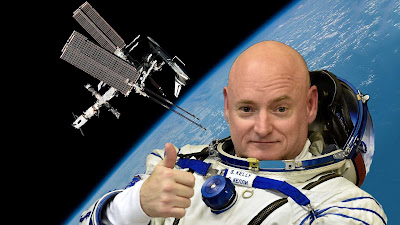 |
| Image Source: TS Knowledge |
Topics: Mars, NASA, Space Exploration, Spaceflight
Scott Kelley spent a year in space.
That's the fantasy of every kid that watched the NASA moon landing (as I did); thrilled to space operas and cartoon shows like "Star Trek", "Space Ghost", "Lost in Space." The films Elysium and Interstellar as well as the CBS Star Trek Discovery laud the ease at which we'll make the transition from terrestrial to space-faring species. Summary
Radiation is energy that travels in the form of waves or high-speed particles. It occurs naturally in sunlight. Man-made radiation is used in X-rays, nuclear weapons, nuclear power plants and cancer treatment.
If you are exposed to small amounts of radiation over a long time, it raises your risk of cancer. It can also cause mutations in your genes, which you could pass on to any children you have after the exposure. A lot of radiation over a short period, such as from a radiation emergency, can cause burns or radiation sickness. Symptoms of radiation sickness include nausea, weakness, hair loss, skin burns and reduced organ function. If the exposure is large enough, it can cause premature aging or even death. You may be able to take medicine to reduce the radioactive material in your body.
*****
Spending a year in space takes such a toll on the human body that astronauts literally have to learn how to walk again once they’re back on Earth. At least, that’s what seems to have happened to Scott Kelly — the American astronaut who spent 340 days on the International Space Station (ISS) between 2015 and 2016.
In an exclusive video given to The Verge by PBS, Kelly is seen trying to walk on a straight line right after landing in the steppes of Kazakhstan. He slowly gets up and stumbles. Putting one foot in front of the other looks like a gargantuan task, as if his legs are made of jelly. Six hours after landing, his steps are a bit quicker, but still uncertain. And after 22 hours, he’s much more stable, but still wobbly. It’s as if Kelly is a one-year-old just learning how to walk. [1]
*****
Scientists studying the effects of outer space on the human body hope that Kelly's readjustment to Earth will help them better understand how living sans gravity affects a person's health. Kelly, who has an identical twin brother who also happens to be an astronaut, makes for a perfect subject when examining space-related health issues; both he and his brother, who spent six months in space, could shed light on the short and long-term health problems caused by outer space.
After spending a year back on Earth, Kelly now shares his health struggles in a new book entitled Endurance. Scott Kelly's health problems sound absolutely grueling, and he will face issues with his health for the rest of his life. Space already sounds scary enough, and the effects of space on Scott Kelly's body show living in zero gravity comes with zero health perks.
"I can feel the tissue in my legs swelling. I shuffle my way to the bath room, moving my weight from one foot to the other with deliberate effort. Left. Right. Left. Right. I make it to the bathroom, flip on the light, and look down at my legs. They are swollen and alien stumps, not legs at all. 'Oh sh*t,' I say.
'Amiko, come look at this.' She kneels down and squeezes one ankle, and it squishes like a water balloon. She looks up at me with worried eyes. 'I can't even feel your ankle bones,' she says." [2]
He complains of nausea and skin burns. This will likely be Scott Kelly's life for the foreseeable future.
Reading through the excerpts of his book was painful. It pained the 10-year-old in me that thrilled to the aspect of space as "final frontier" or cool place to travel through. It was a decade old child that didn't know anything about radiation poisoning, time dilation, the third law of motion; the need for gravity wells in orbit or spaceflight - so humans can bear their own weight - for the general health of astronauts.
Though I admire and appreciate his sacrifice for the possibility of journeying to Mars and beyond, this gives pause to the entire enterprise of space travel. At likely less-than-warp speeds, we need polymers that are lightweight and capable of fending off the dosage of radiation Astronaut Kelly has obviously been exposed to.
Otherwise, we're probably earthbound in the near or foreseeable future. Abusing our environment and climate will be counter productive to species survival.
For his courage in the spirit of exploration as to John Glenn, Godspeed Scott Kelly.
[1] Watch astronaut Scott Kelly struggle to walk on Earth after a year in space, as if his legs are made of jelly, Alessandra Potenza, The Verge
[2] Scott Kelly’s Body Has Been Going Through Gruesome Hell Since He Got Back From A Year In Space, TS Knowledge
Related links:
Endurance: A Year in Space, A Lifetime of Discovery, Scott Kelly
Scott Kelly Spent a Year in Space—Find Out How Hard It Was, National Geographic


